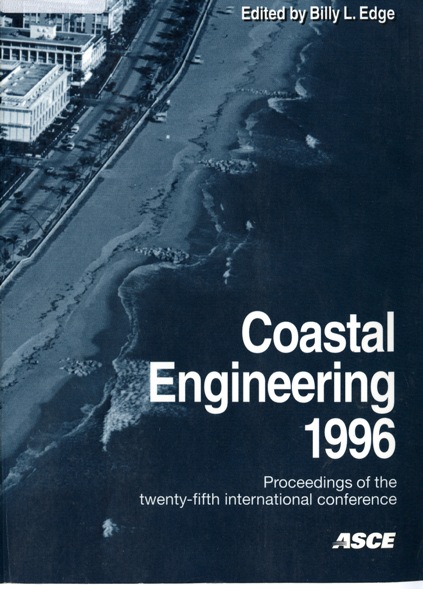Abstract
Characteristics of waves and currents induced when a strong wind blows shoreward in a nearshore zone have been investigated experimentally. The drag coefficient of wavy surface has been related to the ratio u*a/cP, where u*a is the air friction velocity on the water surface and cP the phase velocity of the predominant wind waves. Though the relation between the frequencies of the predominant waves and fetch is very similar to that for deep water, the fetch-relation of the wave energy is a little complicated because of the wave shoaling and the wave breaking. The dependence of the energy spectra on the frequency /changes from /-5 to/"3 in the high frequency region with increase of the wind velocity. A strong onshore drift current forms along a thin layer near the water surface and the compensating offshore current is induced under this layer. As the wind velocity increases, the offshore current velocity increases and becomes much larger than the wave-induced mass transport velocity which is calculated from Longuet- Higgins' theoretical solution.
Authors retain copyright and grant the Proceedings right of first publication with the work simultaneously licensed under a Creative Commons Attribution License that allows others to share the work with an acknowledgement of the work's authorship and initial publication in this Proceedings.

